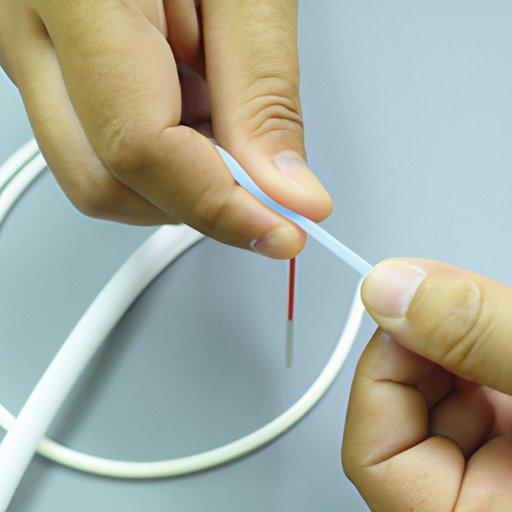Introduction
Catheterization is a medical procedure in which a small tube is inserted into a patient’s body. The purpose of the tube, known as a catheter, can be to drain fluids, deliver medications, or provide access to an organ. This article will explain the basics of catheterization, as well as its risks and benefits, and how to care for a patient who has undergone the procedure.
Explaining the Basics of Catheterization
Before delving into the specifics of catheterization, it is important to understand what a catheter is and how it is used. A catheter is a thin, flexible tube that can be inserted into a person’s body. Depending on the type of catheter, it may be inserted into the bladder, urethra, lungs, or other organs.
The catheter is used for various medical purposes, such as draining fluids from the body, delivering medications, or providing access to an organ. For example, catheters are used to drain urine from the bladder in cases of urinary incontinence or obstruction. They can also be used to provide access to the heart for diagnostic procedures, such as angiograms or cardiac ablation.

How to Use a Catheter
Catheterization involves a few steps. First, the area where the catheter will be inserted must be cleaned with an antiseptic solution. The catheter is then inserted into the body through a tiny incision or puncture. Once the catheter is in place, it is secured with tape or a suture. After the procedure is complete, the area is covered with a dressing.
There are several types of catheters available, each designed for different uses. For example, Foley catheters are often used to drain urine from the bladder, while Swan-Ganz catheters are used to measure pressures in the heart and lungs. Other types of catheters include hemodialysis catheters, biliary catheters, and transesophageal echocardiography (TEE) catheters.

Risks and Benefits of Catheterization
Catheterization carries potential risks, such as infection, bleeding, or tissue damage. In some cases, the catheter may become blocked or dislodged, requiring additional surgery to remove. Additionally, there is a risk of allergic reaction to the materials used in the procedure.
Despite the risks, catheterization can be beneficial in certain situations. It can provide access to organs for diagnostic purposes or treatments, such as chemotherapy. It can also help to relieve pressure on the bladder or other organs, allowing them to heal. Additionally, catheterization can reduce the need for invasive surgeries.
What to Expect During and After Catheterization
Patients should prepare for catheterization by discussing any allergies or medical conditions they may have with their doctor. During the procedure, the patient will be asked to lie down and remain still while the catheter is inserted. The entire process typically takes less than 10 minutes.
After the procedure, the patient may experience some pain or discomfort at the insertion site. The doctor may recommend medications to alleviate any discomfort. The patient should also take measures to prevent infection, such as taking antibiotics and avoiding activities that could cause the catheter to become blocked or dislodged.

Tips for Caring for a Catheterized Patient
Caring for a patient who has undergone catheterization requires special attention. The catheter must be kept clean and dry at all times. The patient should be encouraged to drink plenty of fluids to help flush the bladder and reduce the risk of infection. The dressing should be changed regularly and the area should be inspected for signs of infection.
In addition, the patient should be monitored for signs of discomfort or complications, such as fever or redness around the insertion site. If any of these symptoms occur, the patient should seek medical attention immediately.
Conclusion
Catheterization is a medical procedure in which a catheter is inserted into the body to allow for drainage or treatment. There are several types of catheters, each designed for a specific purpose. The procedure carries potential risks, but can also provide significant benefits. It is important to follow proper care instructions to ensure the safety and comfort of the patient.
If you would like to learn more about catheterization, please consult your doctor or visit the following resources:
- Mayo Clinic: Catheterization
- WebMD: What Is Catheterization?
-
(Note: Is this article not meeting your expectations? Do you have knowledge or insights to share? Unlock new opportunities and expand your reach by joining our authors team. Click Registration to join us and share your expertise with our readers.)
